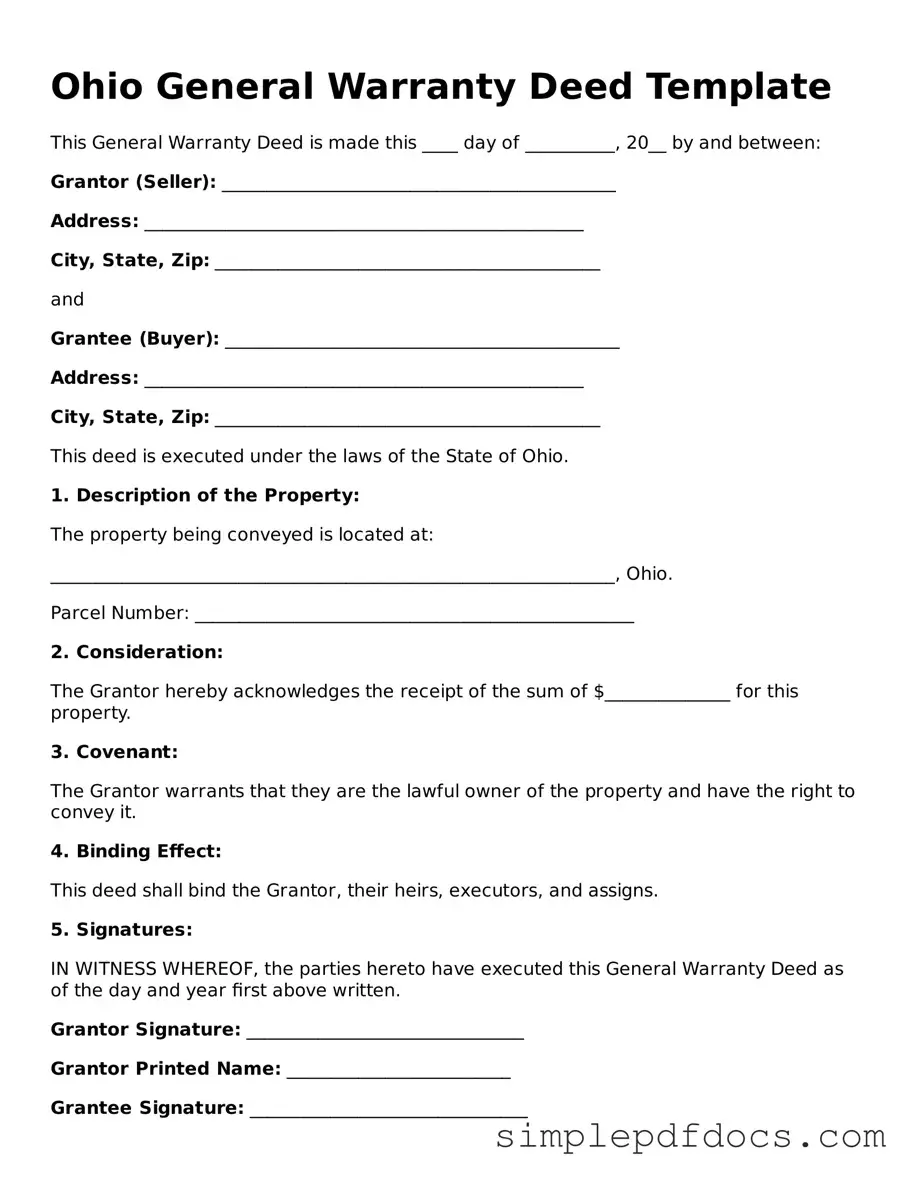The Ohio Deed form is an essential document in real estate transactions, serving as a legal instrument to transfer property ownership from one party to another. This form includes vital information such as the names of the grantor and grantee, a detailed description of the property being transferred, and the date of the transaction. It also specifies any conditions or warranties associated with the transfer, ensuring that both parties understand their rights and obligations. Proper execution of the deed, including signatures and notarization, is crucial to validate the transfer. Understanding the various types of deeds available in Ohio, such as warranty deeds and quitclaim deeds, can help individuals choose the right one for their specific situation. Whether you are buying or selling property, knowing how to properly complete and file the Ohio Deed form is an important step in the process, providing peace of mind as you navigate the complexities of real estate ownership.
